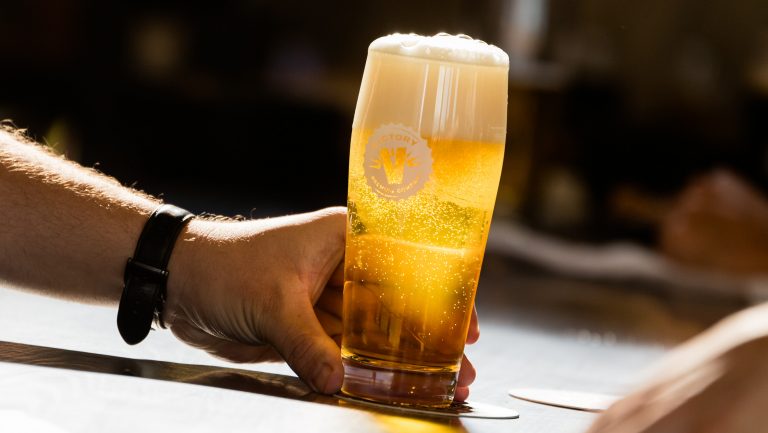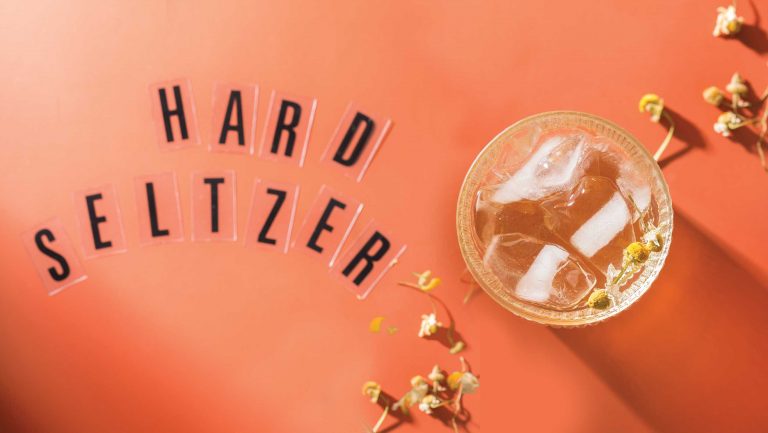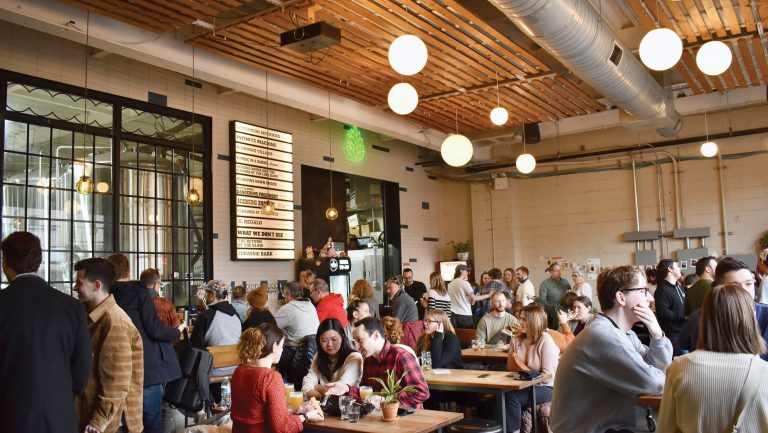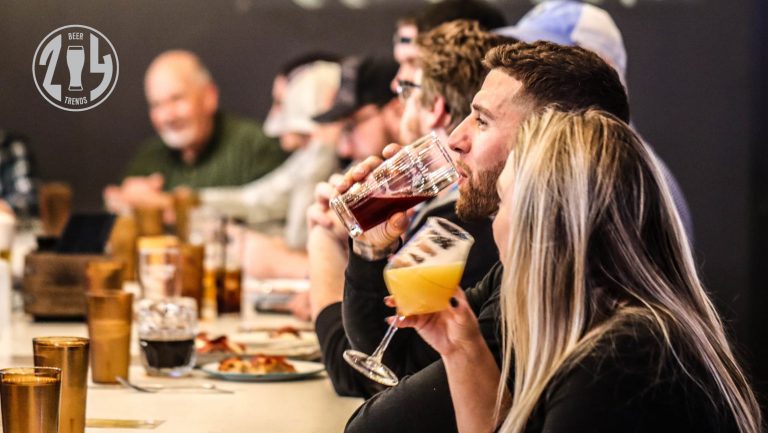People were skeptical when Victory Brewing Company, a recently opened craft brewery in Downingtown, Pennsylvania, introduced a pilsner in 1996 called Prima Pils. India pale ales were on the ascent, and the two best-selling craft brands were Samuel Adams Boston Lager, a Vienna lager, and Pete’s Wicked Ale, a brown ale. Crisp, lighter-tasting (and lighter-colored), lower-alcohol pilsners were simply not in vogue. Bill Covaleski, a cofounder of Victory and its brewmaster, says that the startup’s handful of wholesalers were excited that the brewery would be releasing a packaged rather than a draft beer. But they were disappointed it was a pilsner.
“They were concerned, and rightfully so,” says Covaleski. Pilsner, the world’s most dominant beer style, had long been associated with the biggest brands in beer, from Budweiser to Yuengling. “Miller Lite was parading around as the true taste of a pilsner beer,” Covaleski says. “J.W. Dundee Honey Brown was marketing itself as a pilsner beer. [The wholesalers] were like, ‘You’re walking into the biggest battle ever. Everything’s a pilsner beer, and none of them taste like yours. This is not going to be easy.’”
But now, 23 years later, Prima Pils is the fourth best-selling product in Victory’s portfolio of more than 20 beers. What’s more, while it might have been a black swan in 1996, it’s now one of dozens of craft pilsners in the U.S. market, thanks to growing demand. Craft beer consumers, perhaps experiencing a little palate fatigue with über-hoppy IPAs, are driving more brewers to embrace this style of beer.

Don’t miss the latest drinks industry news and insights. Sign up for our award-winning newsletters and get insider intel, resources, and trends delivered to your inbox every week.
Pilsner, a style born in present-day Czechia—the Czech Republic— in 1842, is a beer that craft consumers might have shied away from because of its historic association with large corporate brewers. But just as craft brewers have put their own spins on the IPA style, they’re changing up what goes into making pilsner, creating sharper, more distinct variations free of the sort of adjuncts and additives that appear in the macrobrands’ beers—with less bitterness and an almost sessionable alcohol content.
Peak Organic Brewing Co. in Portland, Maine, is one example. The brewery introduced its Fresh Cut pilsner in August 2013. It’s the company’s second best-selling beer, after an IPA. Peak’s market manager, Gabe Maggiotto, who works out of Washington, D.C., says many customers find the dry-hopped Fresh Cut to be a kind of crisp medium between lighter-tasting beers and those more bitter IPAs that dominate the craft market. “People get the hop aromas they love in IPAs,” he says, “but it’s low alcohol—4.6% [ABV]—and on the finish you have low bitterness.”
That might be the key to pilsner’s success beyond the macromarket: a lighter taste and less of a kick (or “lower gravity,” in beer parlance). The Brewers Association—the main trade group for smaller, independent breweries—commissioned a survey in May 2018 in which 1,008 craft drinkers were asked which types of beer they were more or less interested in drinking. Fifty-two percent of those who identified as weekly craft drinkers, and 47 percent overall, chose “crisp” beer styles, which include pilsners. No other types—including juicy/hazy, hoppy, fruity, and tart—commanded such high shares, according to the survey.
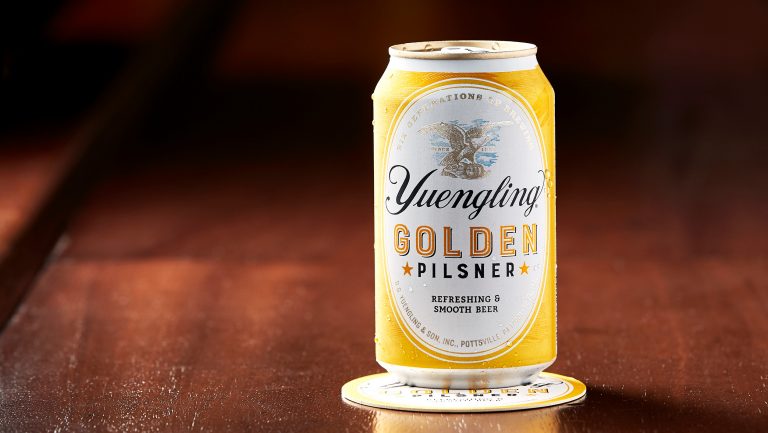
When Yuengling in Pottsville, Pennsylvania, introduced its first new core brand in 17 years in May 2018, the brewery’s team picked a pilsner after conducting its own market research. “When we did so,” says Jen Yuengling, a member of the family-owned company’s sixth generation and its vice president of operations, “we found that nearly 85 percent of beer is consumed in the refreshment category. Nearly 60 percent of the consumers we surveyed showed a strong intent to purchase a Yuengling Golden Pilsner.”
Make no mistake: Macrobrands like Budweiser and Miller Lite still dominate the pilsner market. And IPAs are still rapidly outselling pilsners in the craft category, according to the Chicago-based marketing firm IRI. Ryan Stredney, a public relations specialist at IRI, says retailers sold nearly $40 million in packaged craft pilsners in 2018—compared with almost $1.5 billion in IPA sales.

Bill Covaleski has seen longer odds for craft pilsner, though. Underlining Jen Yuengling’s rationale for a new pilsner in 2018, he, too, points to refreshment as a main driver for Victory’s decision in 1996 and one that should buoy pilsner’s current rising popularity among craft consumers. Pilsner’s lower alcohol content and drier body can help it stand out naturally in America’s juicy, hazy, hoppy craft market. Says Covaleski, “It’s the perfect place for [pilsner] beer.”

Dispatch
Sign up for our award-winning newsletter
Don’t miss the latest drinks industry news and insights—delivered to your inbox every week.
Tom Acitelli is the author of The Audacity of Hops: The History of America’s Craft Beer Revolution and American Wine: A Coming-of-Age Story, among other books on booze.

